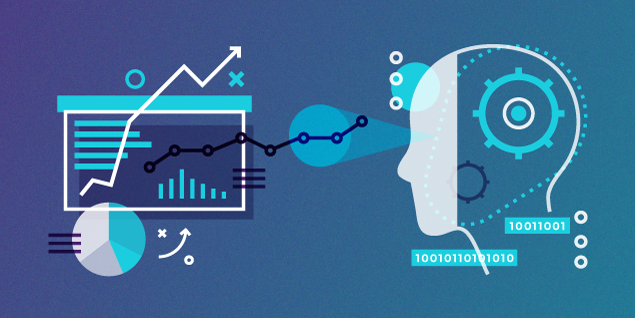The Future of Data Analysis: Exploring the Role of AI in Predictive Analytics

In today’s data-driven world, analytics has become a crucial aspect of every business. With the increasing volume and complexity of data, organizations are looking for innovative ways to make sense of it all. This is where Artificial Intelligence (AI) and Predictive Analytics come in – two powerful tools that, when combined, can unlock unprecedented insights and drive business success. In this article, we’ll delve into the world of AI in predictive analytics, exploring its potential, applications, and the future of this emerging field.
H3. The Rise of Predictive Analytics
Predictive Analytics has been around for decades, but its popularity has soared in recent years. This is because it offers a way to forecast what might happen in the future, based on historical data and statistical models. By analyzing trends, patterns, and relationships, organizations can predict customer behavior, market trends, and even potential risks.
Using Predictive Analytics to Gain a Competitive Edge
Predictive Analytics is more than just a tool – it’s a game-changer. By using it to analyze customer data, businesses can create personalized offerings, tailor their marketing strategies, and improve customer satisfaction. Additionally, predictive analytics can help organizations anticipate and prepare for potential risks, such as market fluctuations or supply chain disruptions.
H3. The Role of AI in Predictive Analytics
AI is revolutionizing the field of predictive analytics by providing a more accurate, efficient, and scalable way to analyze data. Machine learning algorithms, deep learning models, and natural language processing techniques are just a few examples of how AI is being used in predictive analytics.
Using Machine Learning to Improve Predictive Accuracy
Machine learning is a key aspect of AI in predictive analytics. By using machine learning algorithms, organizations can train models that can predict outcomes based on historical data. These models can continue to learn and improve over time, allowing for more accurate predictions and better decision-making.
H3. Applications of AI in Predictive Analytics
AI-based predictive analytics has numerous applications across various industries. Here are a few examples:
1. Customer Segmentation
Using AI-driven predictive analytics, organizations can segment their customers based on demographics, behavior, and preferences. This allows for more targeted marketing campaigns and improved customer satisfaction.
2. Supply Chain Optimization
Predictive analytics can help organizations optimize their supply chains by forecasting demand, predicting stockouts, and identifying potential bottlenecks.
3. Fraud Detection
AI-powered predictive analytics can identify patterns and anomalies in data, enabling businesses to detect and prevent fraud in real-time.
4. Healthcare
Predictive analytics can help healthcare organizations identify high-risk patients, optimize treatment plans, and improve patient outcomes.
H3. Challenges and Limitations of AI in Predictive Analytics

While AI in predictive analytics offers many benefits, there are also challenges and limitations to be aware of:
1. Data Quality
AI algorithms are only as good as the data they’re trained on. Poor data quality can lead to inaccurate predictions and suboptimal decision-making.
2. Model Interpretability
Many AI models are black boxes, making it difficult to understand how they arrived at their predictions. This can lead to mistrust and skepticism among stakeholders.
3. Regulatory Compliance
AI-based predictive analytics must comply with regulatory requirements, such as GDPR and HIPAA. Organizations must ensure that their models do not inadvertently collect or use sensitive data.
H3. Future of AI in Predictive Analytics
The future of AI in predictive analytics is exciting and rapidly evolving. Some trends to watch out for include:
1. Explainable AI
Developments in AI explainability will enable organizations to better understand how models arrive at their predictions, improving trust and decision-making.
2. Transfer Learning
Transfer learning will allow organizations to use pre-trained models and adapt them to their specific use cases, reducing the time and cost of model development.
3. Edge AI
Edge AI will enable organizations to deploy AI models on the edge, reducing latency and improving real-time decision-making.
4. Human-AI Collaboration
As AI becomes more pervasive, human-AI collaboration will become increasingly important. Organizations will need to develop strategies for effectively integrating AI models into their workflows and decision-making processes.
H3. Conclusion
AI in predictive analytics is a powerful tool that’s revolutionizing the way organizations make decisions. From customer segmentation to supply chain optimization, AI-based predictive analytics has numerous applications across various industries. While there are challenges and limitations to be aware of, the future of AI in predictive analytics is bright and promising. By staying up-to-date with the latest trends and developments, organizations can unlock the full potential of AI in predictive analytics and drive business success.
Take Action
If you’re interested in learning more about AI in predictive analytics, we encourage you to share this article with your colleagues and networks. Join the conversation on social media using the hashtag #AIPredictiveAnalytics, and explore the resources and tools available on our website.
Share this article with a colleague or friend who might be interested in learning more about AI in predictive analytics. Click the share button below to spread the word!
Share this article on LinkedIn: https://www.linkedin.com
Share this article on Twitter: https://twitter.com
Share this article on Facebook: https://www.facebook.com


